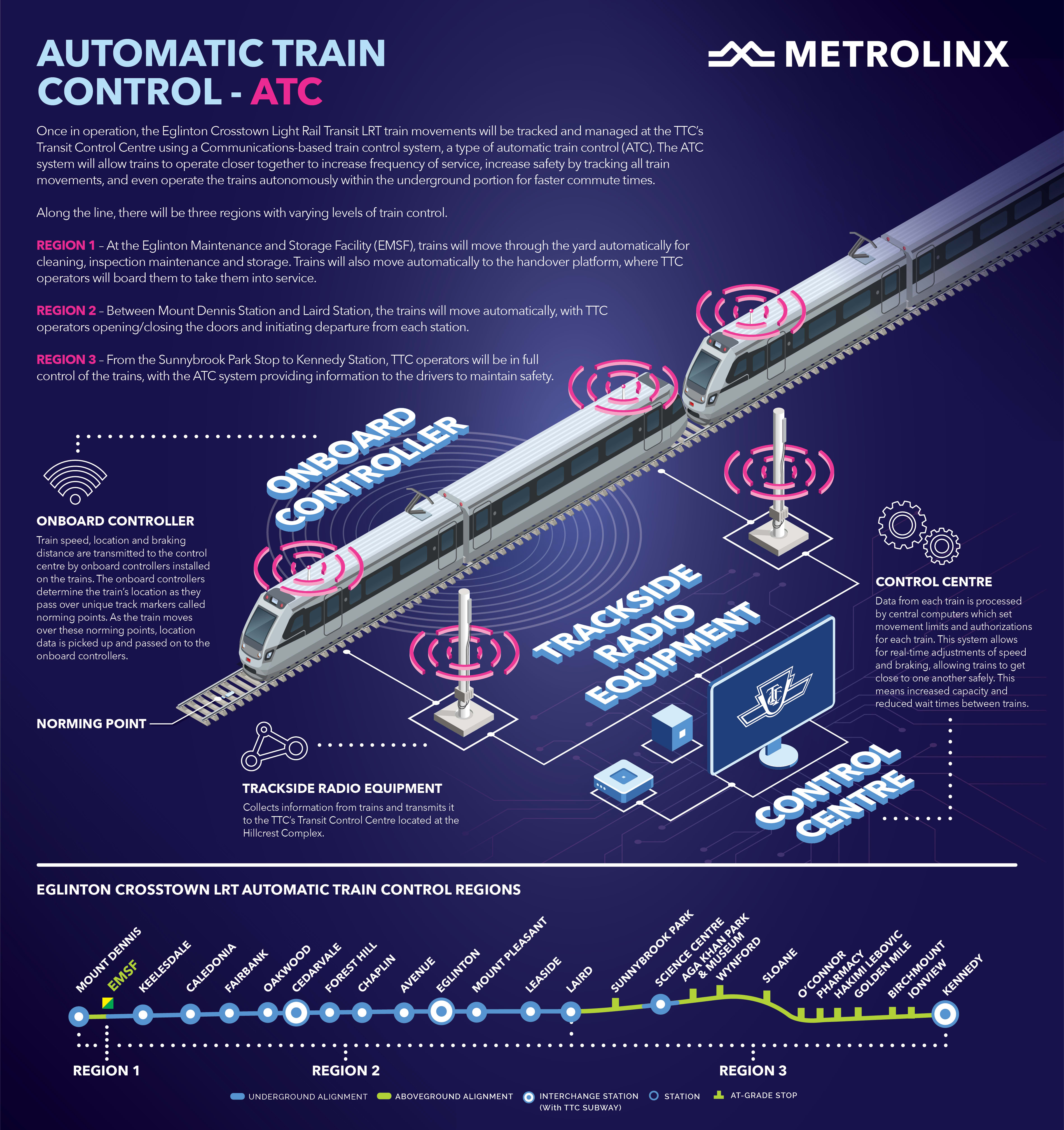The Eglinton Crosstown LRT automatic controller - an infographic
The science behind moving vehicles along the Toronto light rail transit route.
Dec 9, 2019
If you assumed the Eglinton Crosstown light rail transit (LRT) system would be sophisticated, you’re on the right track.
To help explain the clockwork-like components, we’ve broken things down to three regions, as well as the in-depth graphic to spell it all out, below.
Once in operation, the LRT train movements will be tracked and managed at the TTC’s Transit Control Centre using a communications-based train control system. It’s a type of automatic train control (ATC).
The ATC system will allow trains to operate closer together to increase frequency of service, increase safety by tracking all train movements, and even operate the trains autonomously within the underground portion for faster commute times.
Along the line, there will be three regions with varying levels of train control.
REGION 1 – At the Eglinton Maintenance and Storage Facility (EMSF), trains will move through the yard automatically for cleaning, inspection maintenance and storage. Trains will also move automatically without a driver to the handover platform, where TTC operators will board them to take them into service.
REGION 2 – Between Mount Dennis Station and Laird Station, the trains will move automatically, with TTC operators opening/closing the doors and initiating departure from each station.
REGION 3 – From the Sunnybrook Park Stop to Kennedy Station, TTC operators will be in full control of the trains, with the ATC system providing information to the drivers to maintain safety.
Did you know?
Fully automated vehicles are not currently allowed to operate on roads in Canada, except in select pilot projects like Ontario’s Automated Vehicle Pilot Program. The LRV’s will be fully equipped to operate autonomously, and if automated vehicles are allowed on Canadian roads, the LRV’s will be able to drive themselves.
Onboard Controllers
Train speed, location and braking distance are transmitted to the control centre by onboard controllers installed on the trains. The onboard controllers determine the train’s location as they pass over unique track markers called norming points. As the train moves over these norming points, location data is picked up and passed on to the onboard controllers.
Trackside Radio Equipment
It collects information from trains and transmits it to the TTC’s Transit Control Centre located at the Hillcrest Complex.
The Control Centre
Data from each train is processed by central computers which set movement limits and authorizations for each train. This system allows for real-time adjustments of speed and braking, allowing trains to get safely close to one another. This means increased capacity and reduced wait times between trains.
by Erika D’Urbano Communications senior advisor
